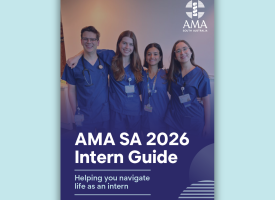Autism Spectrum Disorder - 2016
What is Autism or Autism Spectrum Disorder?
Autism is a broad term used to describe developmental disabilities characterised by marked difficulties in social interaction, impaired communication, restricted and repetitive interests and behaviours and sensory sensitivities.[1] Autism Spectrum Disorder (ASD) is a term that is used to recognise that the range of difficulties associated with Autism occur on a spectrum, with individuals impacted at varying degrees.
There is no reliable data on the prevalence of ASD in Australia. Estimates are guided by prevalence data from comparable countries. In the US, the Centre for Disease Control reports a stable prevalence of one in 68 children being impacted by ASD.[2] A more conservative estimate comes from the United Kingdom, where prevalence of ASD has been found to be one in 100 children.[3] This more conservative estimate is often cited in Australia. Based on data from the ABS this equates to approximately 230,000 children meeting diagnostic criteria for ASD.
Researchers are currently focusing on both genetic and environmental triggers for ASD, but the exact cause of ASD remains unknown. The AMA calls for ongoing research into the causes of ASD and a summation of the evidence of non-causative factors to stop the spread of misinformation and misleading advice about the causes of ASD.
The AMA Position:
1. Early identification and intervention is vital
There is no specific medical (or biomedical) test that can be used to diagnose ASD. A definitive diagnosis is made via screening tools and observation. Current research suggests that ASD can be reliably diagnosed at two years; a recent international review found that diagnosis often occurs at three years of age.[4] An analysis of Medicare data found that the most frequent age for diagnosis in Australia is 5.9 years.[5] In a survey of parents and carers of children with Autism, 34 per cent reported waiting over a year for a diagnosis, and close to 20 per cent reported waiting for more than two years.
The data suggests that children in Australia with ASD are not being identified as early as they should be.
Due to brain plasticity, early identification of ASD can contribute to a significant improvement in outcomes. Children who are suspected of having ASD must be referred on for diagnostic assessment as soon as possible.
During the process of diagnosis, areas of deficits are likely to be identified. Following diagnosis, and based on identified deficits, children can be referred to a range of early intervention services that are tailored to meet their unique needs. The fundamental goal of early intervention is to reduce the impact of the disability. Early intervention also tends to lower the costs associated with the disability for families and the wider community.[6]
Delays in receiving a referral, combined with delays in receiving the diagnostic assessment can result in children accessing early intervention services much later than is ideal. This diminishes the impact of the early interventions. Research and parent reports indicate that Australian children are encountering delays in the process of referral and diagnosis for ASD.
Recommendation: Effective and evidence-based treatments should be instituted as soon as possible to maximise the effectiveness of such therapies.
2. Workforce issues must be recognised
The drivers for the delays in receiving a referral and receiving a diagnosis are different. Once a child has received a referral for a diagnostic assessment, workforce issues may play a role. This is because a limited number of paediatricians, child psychiatrists, and clinical psychologists work specifically in the area of ASD. This problem is further magnified for children living in rural and remote areas where few, if any, clinicians provide diagnostic assessment.[7] This can result in lengthy waiting times that may be detrimental for the child.
Recommendation: It is vital that governments, the relevant Medical Colleges, and professional bodies ensure that there are a suitable number of clinicians and other professionals to ensure timely access to diagnostic assessment for children who are suspected of having ASD.
Concerns about delays in accessing diagnostic assessment should not prevent a referral from being provided to a child suspected of having ASD.
3. Health, education, disability, and parent sectors must work together
ASD sits across a broad range of sectors including health, education, disability, and parent/consumer sectors.
Recommendation: It is vital that each sector is recognised for their unique contributions, but also that they work together to ensure the best outcomes for children and their families. Given that parents and teachers often spend lengthy periods of time with a child, medical practitioners should seek their insights and observations of children suspected of having ASD.
4. Guidance and research (GPs and interventions)
There are currently no Australian clinical guidelines that are concerned with the identification of ASD in general practice. This may be contributing to vastly different experiences for children who are suspected of having ASD. Recent research[8] confirms this lack of consistency in ASD referral and diagnostic practices in Australia.
Recommendation: Suitable clinical guidance, possibly in the form of comprehensive guidelines or minimum national standards, should be developed in order to improve referral practices and diagnostic assessments for children suspected of having ASD. This material should be informed by international best practice and the latest research.
Recommendation: The AMA calls for ongoing research into the effectiveness of current and novel therapies.
Recommendation: All health professionals who interact with children should be encouraged to develop and maintain their understanding of early signs and symptoms of ASD.
5. Commitment that ASD will continue to be included as part of the NDIS
In many of the National Disability Insurance Scheme (NDIS) trial sites, there was unanticipated demand for access to NDIS support packages for children with ASD. At one site almost half of those eligible for a support package had a diagnosis of ASD. It is unlikely that this level of demand was anticipated.
While the sustainability of the NDIS is not currently under threat, demand that outweighs resourcing may eventually undermine the Scheme in the longer term. One concern is that the demand will be addressed by narrowing the eligibility for children with ASD. Given the very real benefits of access to early intervention packages (offered through the Scheme), this is not ideal.
Recommendation: The Government must make a strong ongoing commitment that people who are impacted by ASD will have ongoing access to support through the NDIS.
References
[1] Autism Spectrum Australia. (2015). Aspect comprehensive approach for people with autism spectrum disorder: background theory and literature. Available from: https://www.autismspectrum.org.au/sites/default/files/Aspect-Comprehensive-Approach-flyer.pdf
[2] Christensen DL, Baio J, Braun KV, et al. Prevalence and Characteristics of Autism Spectrum Disorder Among Children Aged 8 Years — Autism and Developmental Disabilities Monitoring Network, 11 Sites, United States, 2012. MMWR Surveill Summ 2016;65(No. SS-3)(No. SS-3):1–23. DOI: http://dx.doi.org/10.15585/mmwr.ss6503a1
[3] Brugha, T.S., McManus, S., Bankart, J., Scott, F., Purdon, S., Smith, J., Bebbington, P., Jenkins, R. & Meltzer, H. (2011). Epidemiology of Autism Spectrum Disorder in Adults in the community in England. Arch Gen Psychiatry 86(5): 459-465.
[4] Daniels, A.M., Mandell, D.S. (2013). Explaining differences in age at autism spectrum diagnosis: A critical review. Autism, 18: 583-597.
[5] Bent, C. A., Dissanayake, C., & Barbaro, J. (2015). Mapping the diagnosis of autism spectrum disorder in children aged 7 years in Australia, 2010-2012. Med J Aust, 202(6): 317-320.
[6] Productivity Commission.(2011). Disability Care and Support, Report no. 54, Canberra.
[7] Taylor, L., Brown, P., Eapen, V., Midford, S., Paynter, J., Quarmby, L., Smith, T., Maybery, M., Williams, K. and Whitehouse, A. (2016). Autism Spectrum Disorder Diagnosis in Australia: Are we meeting Best Practice Standards? Autism Co-operative Research Centre, Brisbane.
[8] Taylor, L., et al. (2016). Autism Spectrum Disorder Diagnosis in Australia: Are we meeting Best Practice Standards? Autism Co-operative Research Centre, Brisbane.



